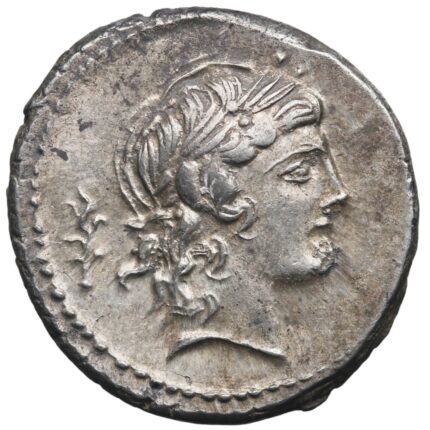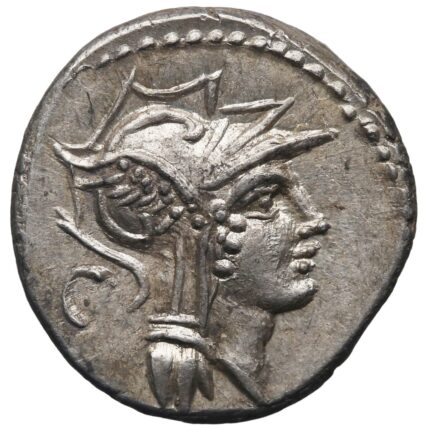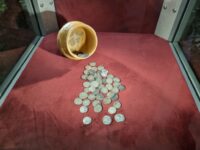 A hoard of 175 silver denarii from the Roman Republic has gone on display for the first time a year and a half after it was discovered near Livorno, Tuscany. The coins, all but one struck by the mint in Rome, date to between 157 and 82 B.C. Except for two that are fragmented, they are intact and in excellent condition. The terracotta pot they were buried in was also found, making this an extremely rare complete Republican-era coin hoard that was archaeologically excavated upon discovery.
A hoard of 175 silver denarii from the Roman Republic has gone on display for the first time a year and a half after it was discovered near Livorno, Tuscany. The coins, all but one struck by the mint in Rome, date to between 157 and 82 B.C. Except for two that are fragmented, they are intact and in excellent condition. The terracotta pot they were buried in was also found, making this an extremely rare complete Republican-era coin hoard that was archaeologically excavated upon discovery.
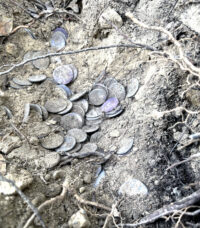 The coins were first discovered in November 2021 by Alberto Cecio while hiking the Tenuta Bellavista Insuese, an organic farm, agritourism destination and natural preserve a few miles north of Livorno. Cecio was looking for mushrooms in a forested area where the underbrush had recently been cleared and a few trees felled when he spotted a two potsherds each containing a small round clod. He brushed off some of the soil and realized the rounds were coins. As a member of the volunteer cultural organization the Paleontological Archaeological Group of Livorno, he understood they might be of archaeological significance so he immediately notified the local Superintendency of Archaeology and waited for six hours for their archaeologists to arrive. (His selflessness continued after the hoard was recovered and assessed. Cecio chose to forgo the discovery prize of 25% of the value of the find, about €6,250 in this case.)
The coins were first discovered in November 2021 by Alberto Cecio while hiking the Tenuta Bellavista Insuese, an organic farm, agritourism destination and natural preserve a few miles north of Livorno. Cecio was looking for mushrooms in a forested area where the underbrush had recently been cleared and a few trees felled when he spotted a two potsherds each containing a small round clod. He brushed off some of the soil and realized the rounds were coins. As a member of the volunteer cultural organization the Paleontological Archaeological Group of Livorno, he understood they might be of archaeological significance so he immediately notified the local Superintendency of Archaeology and waited for six hours for their archaeologists to arrive. (His selflessness continued after the hoard was recovered and assessed. Cecio chose to forgo the discovery prize of 25% of the value of the find, about €6,250 in this case.)
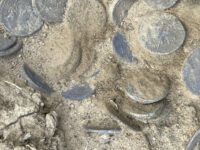 The subsequent excavation found the rest of the coins and the ceramic vessel in which they were buried in the 1st century B.C. The discovery was kept secret while archaeologists catalogued, conserved and researched the treasure. The dates, quantity and consistency of denomination suggest it may have been the nest egg of a Roman legionary. Soldiers were paid in silver denarii, and 175 of them would have been a legionary’s pay for a year and a half.
The subsequent excavation found the rest of the coins and the ceramic vessel in which they were buried in the 1st century B.C. The discovery was kept secret while archaeologists catalogued, conserved and researched the treasure. The dates, quantity and consistency of denomination suggest it may have been the nest egg of a Roman legionary. Soldiers were paid in silver denarii, and 175 of them would have been a legionary’s pay for a year and a half.
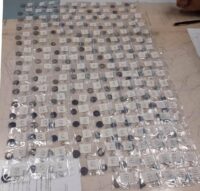 The dates of the most recent coins suggest the hoard was buried in the turbulent era of the Social War (91-88 B.C.), when Rome’s former Italian allies revolted against it, and the subsequent civil war between the forces of Gaius Marius and Lucius Cornelius Sulla (83-82 B.C.). It was Gaius Marius who in 107 B.C. first pushed through the enlistment of the capite censi (the head count), the lowest class of Roman citizens who owned no property, in the army. A landless soldier who saved his pay may well have returned to the country with his nest egg planning to buy land or do business, only to bury it for safekeeping when things got hairy.
The dates of the most recent coins suggest the hoard was buried in the turbulent era of the Social War (91-88 B.C.), when Rome’s former Italian allies revolted against it, and the subsequent civil war between the forces of Gaius Marius and Lucius Cornelius Sulla (83-82 B.C.). It was Gaius Marius who in 107 B.C. first pushed through the enlistment of the capite censi (the head count), the lowest class of Roman citizens who owned no property, in the army. A landless soldier who saved his pay may well have returned to the country with his nest egg planning to buy land or do business, only to bury it for safekeeping when things got hairy.
The hoard and pot are on display in a new exhibition at the Museum of Natural History of the Mediterranean in Livorno through July 2nd.
